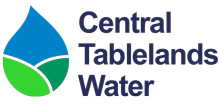Lake Rowlands
Current Lake Rowlands Level
Storage Levels (% of capacity)
| 1st of Month Level | 2015 | 2016 | 2017 | 2018 | 2019 | 2020 | 2021 | 2022 | 2023 | 2024 |
|---|---|---|---|---|---|---|---|---|---|---|
| January | 82% | 92% | 99% | 84% | 67% | 42% | 97% | 94% | 101% | 97% |
| February | 79% | 88% | 93% | 79% | 68% | 40% | 96% | 101% | 100% | 93% |
| March | 73% | 80% | 84% | 74% | 61% | 36% | 97% | 92% | 90% | 88% |
| April | 66% | 74% | 84% | 68% | 56% | 35% | 101% | 94% | 93% | 84% |
| May | 70% | 70% | 85% | 63% | 51% | 35% | 98% | 102% | 101% | |
| June | 72% | 76% | 88% | 64% | 51% | 39% | 100% | 102% | 101% | |
| July | 81% | 103% | 89% | 64% | 50% | 56% | 101% | 101% | 101% | |
| August | 97% | 104% | 94% | 64% | 50% | 100% | 103% | 101% | 100.5% | |
| September | 98% | 104% | 91% | 69% | 58% | 100% | 102% | 103% | 100% | |
| October | 99% | 106% | 93% | 74% | 60% | 100% | 102% | 105% | 100% | |
| November | 100% | 95% | 90% | 71% | 56% | 102% | 100% | 105% | 98% | |
| December | 97% | 100% | 96% | 68% | 50% | 99% | 101% | 103% | 97% |
Lake Rowlands Dam, formerly known as Coombing Dam, is situated on the Coombing Rivulet, a tributary of the Belubula River. The Dam was designed in 1939 by Gutteridge, Haskins and Davey as a reinforced concrete slab and buttress type dam with a top water level (TWL) at RL 882.70m. This type of construction is rather unusual, and the dam is one of only a handful of slab and buttress dams built in Australia.
Construction of the dam was carried out in the period 1949 to 1954 under the supervision of Gutteridge, Haskins and Davey.
At the design TWL water could be supplied by gravity to Tottenham, a distance of 264 kilometres, in a pipeline which was designed to service Canowindra, Forbes, Trundle and a number of smaller communities enroute. When the Municipality of Forbes did not join the scheme the pipeline serving Forbes was eliminated. The size of the main pipeline from the dam to the Grenfell take off near Gooloogong was reduced and the dam TWL was constructed to RL 877.82m, almost 5 metres below the original design height.
The gross storage of the present dam is 4,500 megalitres. If raised to its original design height the storage would be 10,900 megalitres. The storage catchment area is approximately 197 square kilometres and the surface area of the dam, when full, is approx. 0.8 square kilometres (80 hectares).
A buttress dam has an upstream face in the form of concrete slabs, supported by buttresses. The face has a slope of about 45 degrees.
The dam is constructed across the main channel of the Coombing Rivulet, joining at the northern abutment to the earthen embankment on the gently sloping northern bank.
The spillway discharge is by free fall from the top of the face slabs; an emergency spillway channel is also provided north of the earthen embankment with a crest level 0.6m above the crest of the concrete wall at the centre of the dam.
There are two trunk mains drawing water from Lake Rowlands. One of these is a 375mm gravity main to the Carcoar Filtration Plant.
The scheme supplies the main centres of Grenfell, Eugowra, Manildra, Canowindra, Carcoar, Blayney and Millthorpe.
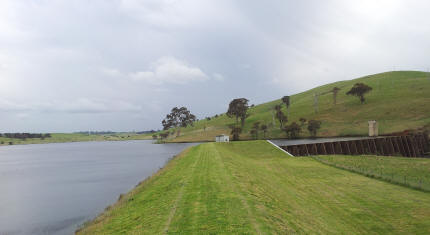
Lake Rowlands Upgrade Proposal
Since 1997, Council has been lobbying the NSW State Government to grant the necessary approvals for the enlargement of Lake Rowlands from 4.5 gigalitres (GL) to 26.5GL.
The first submission to the NSW Government was as a result of approaches from two significant gold mining operations in the Orange and Blayney areas needing to improve their water security.
A number of studies were conducted at that time with the most significant being a foundation investigation study carried out by Rob Parker Engineering on a proposed new dam site 2.5 kilometres downstream of the existing dam wall. The study found that the site was suitable for a 26.5GL roller compacted concrete dam.
The NSW Government was not forthcoming with any approvals at that stage and, in the meantime, one of the gold mining companies dropped out of the equation after they abandoned their operation at Blayney due to flooding from a fractured underground aquifer.
With the advent of the millennium drought, Council, Orange City Council and Cadia Valley Gold Mining Operations (Newcrest Mining Ltd) jointly funded an Economic Needs Study which was conducted by the Western Research Institute in Bathurst.
This study, completed in November 2006, once again highlighted the need for the expansion of Lake Rowlands to provide water security for the economic development in the Central West and the growth and development of Orange.
The study was presented to the NSW Government in a further submission and in March 2007 the then Minister for Water, the Hon. Ian MacDonald MP, visited the proposed new dam site and was extremely impressed with the proposal and stated that, if his government was elected on the following Saturday, he would facilitate any submission made by the Water Authority (Central Tablelands Water). Minister MacDonald’s government was re-elected but the necessary approvals have not been forthcoming.
Once again, with the millennium drought being felt right across the Central Tablelands and Central West, water shortage and water security became an increasingly alarming issue and the Centroc group of Councils, of which Council was a member, successfully advocated for the NSW State Government to fund a $500,000 Water Security Study for the Central West.
This study, which was championed by a former Minister for Water and Premier, the Hon. Nathan Rees MP, was completed in October 2009 and in its findings recommended the enlargement of Lake Rowlands as a high priority and associated transfer pipelines as the best means of providing water security to the Central West through to 2059.
Central Tablelands Water continued to lobby the NSW Government over the years for funding for the augmentation of Lake Rowlands but unfortunately to no avail.
In August 2019 and during the worst drought on record, Central Tablelands Water developed a briefing paper on the augmentation of Lake Rowlands. The briefing paper was based on a three (3) staged approach, being: Stage 1 – Raising of Lake Rowlands dam wall increasing storage capacity from 4.5GL to 8GL; Stage 2 – Pipeline linkage between Lake Rowlands & Carcoar Dam, to transfer and store surplus water from Lake Rowlands into Carcoar Dam; and Stage 3 – New Dam 2.5km downstream of existing Lake Rowlands Dam increasing storage capacity from 4.5GL to 26.5GL.
This staged approach was presented by a delegation from Central Tablelands Water to former NSW Minister for Water, Property and Housing, the Hon Melinda Pavey MP on 6 August 2019 at Parliament House in Sydney, and former Deputy Prime Minister, Hon Michael McCormack MP and the Federal Member for Calare, Hon Andrew Gee MP on 16 October 2019 at Parliament House in Canberra.
After continuous lobbying by Central Tablelands Water and with the support of the Central NSW Joint Organisation of Councils, Minister Pavey in November 2019 announced funding of $1 million for the completion of a feasibility study into the Lake Rowlands dam augmentation as part of its emergency response to the drought in regional NSW.
The Lake Rowlands Augmentation feasibility study was to investigate three augmentation options being:
- Option 1 – raise the height of the existing dam wall by 2.2 metres which will increase the capacity from 4.5GL to 8GL. This will help shore up the water security needs of CTW’s existing consumers now and well into the future;
- Option 2 - construct a new dam 2.5km downstream to complement Lake Rowlands Dam – increasing the total storage capacity of the combined dams to 15.5GL, and
- Option 3 - construct a new dam 2.5km downstream to replace Lake Rowlands Dam – increasing the total storage capacity of the combined dams to 26.5GL.
With Options 2 and 3 providing regional water security benefits via existing pipeline interlinkages and new potential pipeline linkages.
Transition to Water Infrastructure NSW
As of 1 July 2021, responsibility for the proposed Lake Rowlands to Carcoar Dam Pipeline project transitioned from WaterNSW to the Department of Planning, Industry and Environment’s Water Infrastructure NSW, a Division of the Water Group.
Water Infrastructure NSW initially commenced preparation of a Final Business Case to explore the option of building a water transfer pipeline from the Central Tablelands Water-operated Lake Rowlands Dam to the larger Carcoar Dam. This follows recommendations by Infrastructure NSW in the 2018 State Infrastructure Strategy and the NSW Government's Lachlan Valley Water Security Study.
Since actively liaising with stakeholders and partners, a strategic decision was made to develop a Final Business Case that will include the assessment of both the Lake Rowlands to Carcoar Dam pipeline project and the Lake Rowlands Dam Augmentation project.
The business case will be subject to a detailed options analysis consistent with the Infrastructure NSW Infrastructure Investor Assurance Framework (IIAF). This analysis will review both projects, along with potential additional options to improve the efficiency and resilience of water management within the Belubula Valley.
To reflect this close alignment between both projects and the partnership between Water Infrastructure NSW and Central Tablelands Water, the project previously known as the Lake Rowlands to Carcoar pipeline project and Lake Rowlands Augmentation project is now the Belubula Water Security Project.
The Final Business Case for the Belubula Water Security Project will be developed to align with the Lachlan Regional Water Strategy which is currently being finalised by the Department of Planning and Environment. The Lachlan Regional Water Strategy will identify policy, planning and infrastructure options that deliver resilient water resources for all water users in the Lachlan catchment.
The Final Business Case and the Lachlan Regional Water Strategy are supported through funding from the Snowy Hydro Legacy Fund.
The development of the Final Business Case will involve broad community and stakeholder consultation, as well as comprehensive environmental and engineering studies. Outcomes of this study will be included in the Final Business Case and submitted to Infrastructure NSW as part of the IIAF gateway process.
Funding
Water Infrastructure NSW applied for additional funding from the Australian Government’s National Water Grid Authority (NWGA) for the Belubula Water Security Project in order to progress the amalgamated business case and review of water management for the Belubula Valley. On 4 February 2022, the Australian Government announced additional funding to support development of a Final Business Case for the Belubula Water Security Project as part of the Mid-year Economic and Fiscal Outlook.
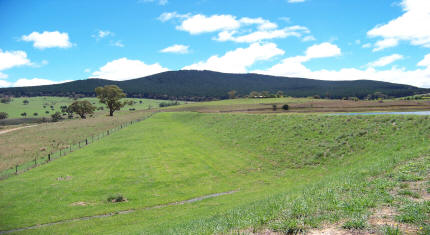
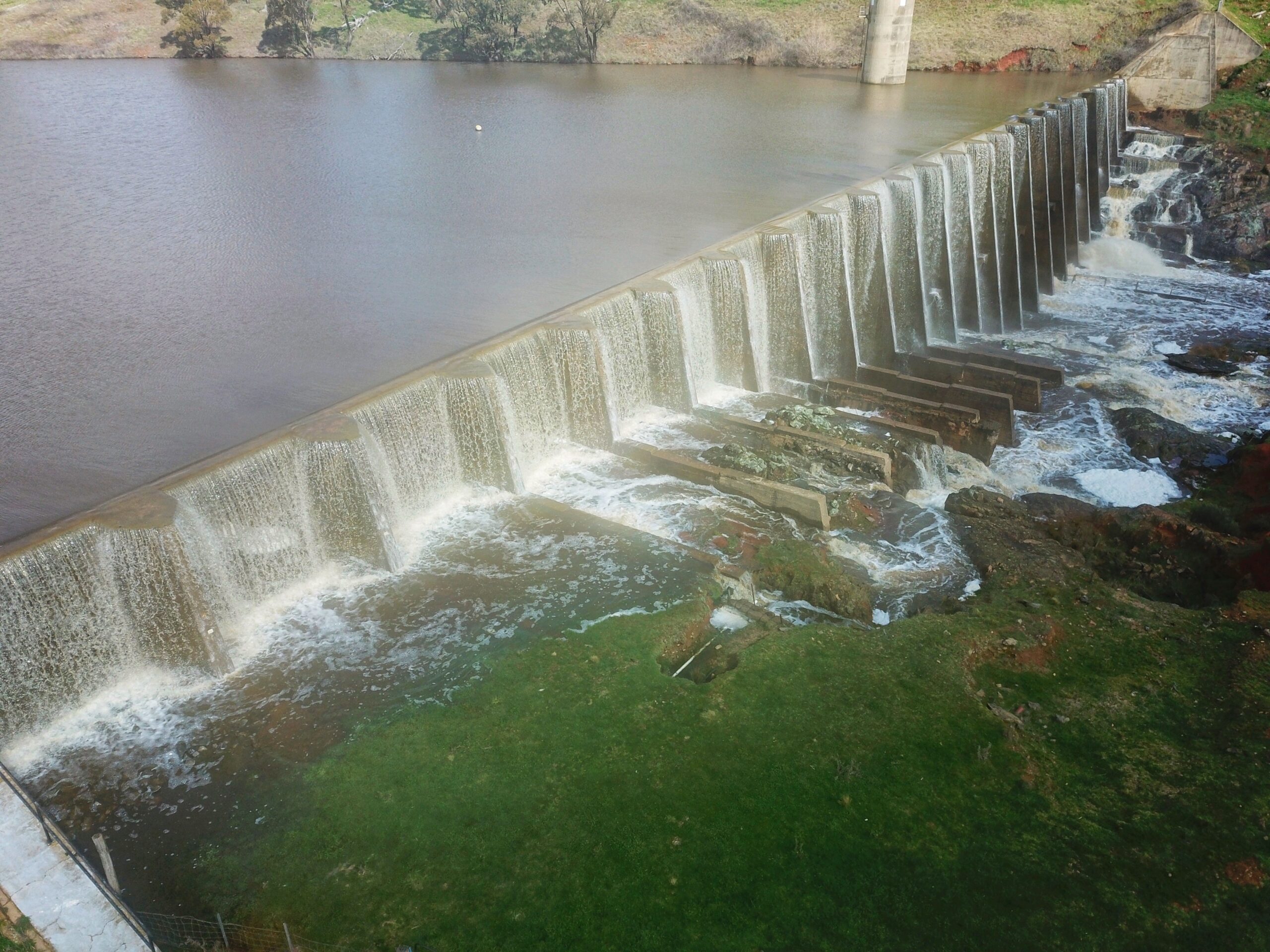
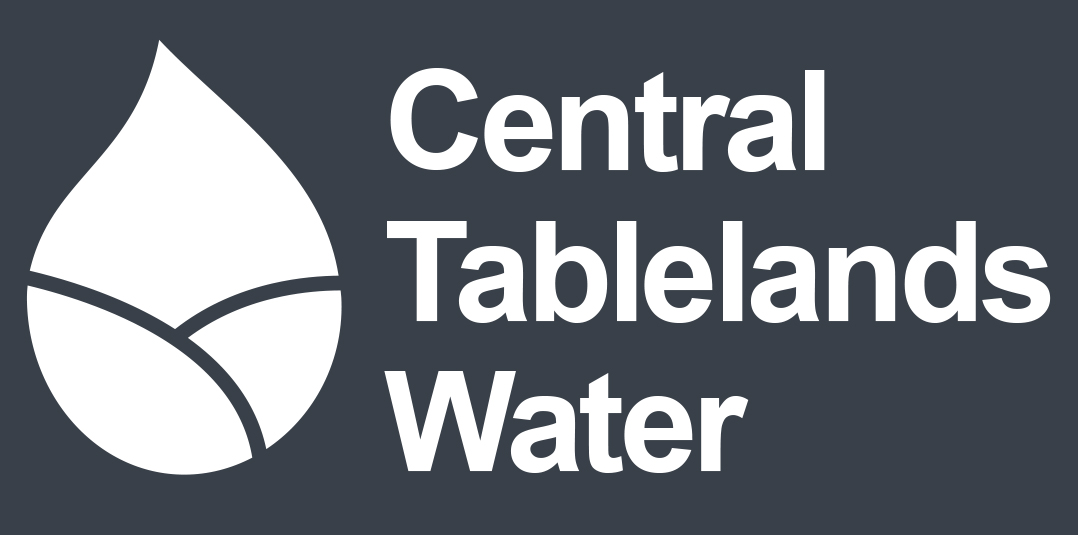
30 Church Street BLAYNEY NSW 2799
Postal Address: PO BOX 61, BLAYNEY NSW 2799
Ph: (02) 6391 7200
email: water@ctw.nsw.gov.au
QUICKLINKS

© 2019 Central Tablelands Water | Website by Ready Marketing
